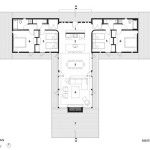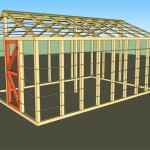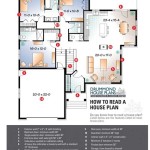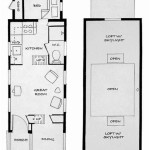An outdoor cat house plan is a set of instructions and specifications for constructing a shelter specifically designed for outdoor cats to provide protection from the elements, a sense of security, and a comfortable resting spot. It typically includes details on materials, dimensions, construction methods, and any special features or amenities.
These plans are valuable for cat owners who want to provide a safe and suitable outdoor environment for their pets, especially in areas with harsh weather conditions or limited indoor space. Outdoor cat houses can offer protection from rain, snow, wind, and extreme temperatures, ensuring the cat’s well-being and comfort.
Now, let’s delve into the specifics of outdoor cat house plans, exploring their essential components and design considerations to help you choose the most appropriate option for your furry friend.
Outdoor cat house plans should consider several important factors for the well-being and comfort of your feline friend:
- Ventilation and airflow
- Appropriate insulation
- Protection from rain and snow
- Escape routes and safety
- Elevated sleeping area
- Easy access and cleaning
- Durability and weather resistance
- Camouflage or aesthetics
- Size and space requirements
- Cost and materials
Taking these points into account will help you create a functional and comfortable outdoor cat house that meets the specific needs of your pet and provides a safe and cozy retreat.
Ventilation and airflow
Proper ventilation and airflow are crucial for maintaining a healthy and comfortable environment inside the outdoor cat house. Good ventilation prevents moisture buildup, reduces odors, and ensures a constant supply of fresh air for your feline friend. Here are some key points to consider:
- Inlets and outlets: The cat house should have multiple ventilation openings, both near the floor and the ceiling, to allow for cross-ventilation. This will facilitate the circulation of fresh air and prevent stale air from accumulating.
- Size and placement: The ventilation openings should be large enough to allow for ample airflow but not so large that the cat can escape or predators can enter. Place the openings strategically to avoid direct drafts that could make the cat uncomfortable.
- Avoid drafts: While ventilation is important, it’s equally crucial to prevent drafts from directly hitting the cat’s sleeping area. Position the ventilation openings carefully to minimize drafts and ensure a cozy and draft-free environment for your pet.
- Monitor and adjust: Observe your cat’s behavior and adjust the ventilation openings accordingly. If your cat seems uncomfortable or restless, it may indicate insufficient ventilation. Conversely, excessive drafts can also cause discomfort.
By ensuring proper ventilation and airflow, you can create a healthy and comfortable environment for your outdoor cat, allowing them to enjoy their outdoor retreat without any respiratory or discomfort issues.
Appropriate insulation
Insulation is a critical aspect of outdoor cat house plans, especially in regions with extreme temperatures. Proper insulation helps maintain a comfortable indoor environment, protecting your cat from the cold during winter and excessive heat during summer.
Materials and types: Choose insulation materials that are specifically designed for outdoor use, such as closed-cell foam, fiberglass batting, or reflective insulation. These materials are moisture-resistant, durable, and provide excellent insulation properties.
R-value: The R-value of insulation indicates its resistance to heat flow. A higher R-value means better insulation. For outdoor cat houses, an R-value of at least R-10 is recommended to provide adequate protection from temperature fluctuations.
Installation: Install the insulation carefully, ensuring there are no gaps or air leaks. Seal any seams or joints with caulk or weatherstripping to prevent heat loss or gain. Proper installation ensures maximum insulation efficiency and a comfortable environment for your cat.
Ventilation: While insulation is important, it’s equally crucial to maintain proper ventilation inside the cat house. Ensure there is adequate airflow to prevent moisture buildup and condensation, which can lead to mold or mildew growth.
Protection from rain and snow
Outdoor cat house plans must prioritize protection from rain and snow to ensure the well-being and comfort of your feline friend during inclement weather.
Sloped roof: A sloped roof is essential for effective water drainage. The angle of the slope should be steep enough to prevent water from pooling or seeping into the cat house. A minimum slope of 30 degrees is recommended.
Overhangs: Roof overhangs extend beyond the walls of the cat house, providing additional protection from rain and snow. They help prevent water from dripping down the walls and seeping into the interior.
Waterproof materials: Choose waterproof materials for the roof and walls of the cat house, such as asphalt shingles, metal roofing, or treated wood. These materials will prevent water penetration and keep the interior dry and protected.
Proper drainage: Ensure there is proper drainage around the cat house to prevent water from accumulating around the base. Consider installing a gravel base or drainage ditch to direct water away from the structure.
By incorporating these features into your outdoor cat house plans, you can provide your feline companion with a safe and dry shelter during rainy and snowy conditions.
## Escape routes and safety
Paragraph before list
Outdoor cat house plans should prioritize the safety and well-being of your feline friend. Incorporating multiple escape routes and safety features into the design is crucial to ensure your cat feels secure and protected in their outdoor shelter.
List
Multiple escape routes
Provide at least two escape routes within the cat house. This is especially important in case of emergencies, such as a fire or a predator attack. The escape routes should be located on opposite sides of the house to allow your cat to quickly and easily exit in any direction.
Elevated sleeping area
Cats naturally seek elevated sleeping spots to feel safe and secure. Incorporate an elevated sleeping area within the cat house, such as a raised platform or a shelf. This will provide your cat with a sense of security and protection while they rest.
Hiding places
Cats appreciate having hiding places where they can retreat to when they feel threatened or overwhelmed. Include small, enclosed spaces within the cat house, such as a covered box or a tunnel, where your cat can hide and feel secure.
Secure construction
Ensure that the cat house is sturdily constructed and securely anchored to the ground. This will prevent the house from being easily tipped over or moved by strong winds or potential predators.
Paragraph after list
By incorporating these escape routes and safety features into your outdoor cat house plans, you can create a safe and secure environment for your feline companion, allowing them to enjoy their outdoor retreat with peace of mind.
Elevated sleeping area
Incorporating an elevated sleeping area into your outdoor cat house plans is crucial for the well-being and comfort of your feline friend. Cats naturally seek elevated vantage points to rest and observe their surroundings, as it provides them with a sense of security and control.
- Protection from predators and the elements
An elevated sleeping area provides your cat with a safe retreat from potential predators and harsh weather conditions. By being off the ground, your cat can avoid contact with cold, damp surfaces, insects, and other ground-dwelling threats.
- Improved visibility and surveillance
Cats have a natural instinct to survey their territory and monitor their surroundings. An elevated sleeping area allows your cat to have a clear view of its environment, enabling them to spot potential threats or approaching humans and other animals.
- Sense of security and control
Being elevated gives cats a sense of security and control over their environment. It allows them to observe and assess situations from a safe distance, reducing stress and anxiety levels.
- Improved air circulation and ventilation
Elevating the sleeping area improves air circulation and ventilation within the cat house. Warm air naturally rises, so an elevated sleeping area ensures your cat has access to fresher, cooler air, especially during warm weather.
By incorporating an elevated sleeping area into your outdoor cat house plans, you can provide your feline companion with a comfortable, secure, and stimulating environment that meets their natural instincts and promotes their overall well-being.
Easy access and cleaning
When designing your outdoor cat house, easy access and cleaning should be key considerations. A well-maintained cat house ensures the hygiene, comfort, and overall well-being of your feline friend.
- Removable roof or door
Incorporating a removable roof or door into your cat house design allows for easy access to the interior. This simplifies cleaning, maintenance, and inspection of the house, ensuring it remains a clean and comfortable space for your cat.
- Smooth interior surfaces
Opt for smooth interior surfaces, such as painted wood or plastic, which are easy to clean and disinfect. Avoid using rough or porous materials that can harbor bacteria or parasites, potentially compromising your cat’s health.
- Adequate space
Provide sufficient space within the cat house to allow for comfortable movement and easy cleaning. Ensure there is enough room for you to reach all areas of the house without difficulty.
- Ventilation for cleaning
In addition to the ventilation required for air circulation, consider incorporating additional ventilation openings specifically for cleaning purposes. This will allow fumes from cleaning products to dissipate quickly, preventing them from lingering inside the cat house.
By incorporating these design elements, you can ensure that your outdoor cat house is easy to access and clean, promoting the well-being and hygiene of your feline companion.
Durability and weather resistance
Durability and weather resistance are crucial considerations in outdoor cat house plans to ensure the longevity and functionality of the structure. Here are key points to consider:
- Material selection
Choose durable materials that can withstand outdoor elements, such as treated wood, vinyl, or weather-resistant plastic. These materials are resistant to moisture, rot, and UV rays, ensuring the cat house’s integrity over time.
- Structural stability
The cat house should be sturdily constructed to withstand strong winds and heavy snow loads. Use sturdy framing materials and reinforce the structure with metal brackets or hurricane ties. Proper bracing and anchoring will prevent the house from collapsing or shifting during severe weather.
- Roofing and waterproofing
The roof is critical for protecting the cat house from rain and snow. Choose waterproof roofing materials like asphalt shingles or metal roofing. Ensure proper drainage by installing gutters or overhangs to prevent water accumulation on the roof. Additionally, seal all seams and joints to prevent leaks.
- Insulation and ventilation
Insulation helps regulate temperature within the cat house, providing warmth in cold weather and preventing overheating in hot weather. Use closed-cell foam insulation or fiberglass batting, which are moisture-resistant and provide excellent insulation. Proper ventilation is also crucial to prevent moisture buildup and ensure air circulation.
By incorporating these durability and weather resistance features into your outdoor cat house plans, you can create a sturdy and long-lasting shelter that will withstand the elements and provide a comfortable and safe haven for your feline companion.
Camouflage or aesthetics
In addition to functionality and durability, the aesthetics and camouflage of your outdoor cat house can also be important considerations. Here are some points to keep in mind:
- Blending with surroundings
If you want the cat house to blend seamlessly with its outdoor surroundings, consider using natural materials and colors that match the environment. This can help camouflage the house, making it less noticeable to predators and providing a more natural and aesthetically pleasing look.
- Complementary design
Alternatively, you can design the cat house to complement your outdoor dcor or the architectural style of your home. By using matching materials, colors, and design elements, you can create a cohesive and visually appealing outdoor space that incorporates the cat house as an attractive feature.
- Personalization
For a more personalized touch, you can add decorative elements to the cat house, such as paint, stencils, or carvings. This allows you to express your creativity and make the cat house a unique and charming addition to your yard.
- Safety and visibility
While aesthetics are important, it’s crucial to prioritize the safety and visibility of the cat house. Avoid using materials or designs that could blend in too well with the surroundings, making it difficult for your cat to locate or be seen by you in case of an emergency.
By considering both functionality and aesthetics, you can create an outdoor cat house that not only provides a comfortable and safe shelter for your feline friend but also complements your outdoor space and reflects your personal style.
Size and space requirements
When determining the appropriate size and space requirements for your outdoor cat house, several factors need to be considered to ensure the comfort and well-being of your feline friend:
- Cat’s size and breed
The size of the cat house should be proportionate to the size of your cat. A larger cat will require a larger house to move around comfortably and stretch out fully.
- Number of cats
If you have multiple cats who will be using the house, you will need to provide adequate space for all of them. A good rule of thumb is to provide at least 4 square feet of space per cat.
- Intended use
Consider how your cat will primarily use the house. If it’s mainly for shelter from the elements, a smaller house may suffice. However, if you want to provide a more spacious area for your cat to relax and play, a larger house is recommended.
In addition to the overall size of the house, it’s important to consider the following space requirements:
- Sleeping area
The sleeping area should be large enough for your cat to stretch out comfortably and feel secure. Provide soft bedding or a cozy cat bed for added comfort.
- Litter box area
If you plan to keep a litter box inside the cat house, allocate a designated area that is private and easily accessible for your cat.
- Food and water bowls
If desired, you can include a small area for food and water bowls within the house, ensuring your cat has easy access to nourishment.
By carefully considering the size and space requirements based on your cat’s needs and intended use, you can create an outdoor cat house that provides a comfortable and inviting retreat for your feline companion.
Cost and materials
The cost of building an outdoor cat house can vary depending on the materials used, the size of the house, and the complexity of the design. Here are some key factors to consider:
- Materials
The materials you choose for the construction of the cat house will significantly impact its cost. Inexpensive materials like plywood or OSB can be used for the frame and walls, while more durable materials like cedar or redwood will be more expensive but offer better weather resistance. Other materials to consider include roofing shingles, insulation, and hardware.
- Size
The size of the cat house will also affect its cost. A larger house will require more materials and labor, increasing the overall cost. Determine the appropriate size based on the number of cats using the house and their size.
- Complexity
The complexity of the design can also influence the cost. A basic cat house with a simple rectangular shape will be less expensive to build than a house with multiple levels, windows, or other architectural features.
- Labor
If you plan to hire a contractor to build the cat house, the labor costs will need to be factored into the budget. The cost of labor will vary depending on the contractor’s rates and the complexity of the project.
To save on costs, consider using recycled or salvaged materials, building the cat house yourself, or opting for a simpler design. By carefully planning and budgeting, you can create a comfortable and affordable outdoor cat house for your feline friend.










Related Posts








